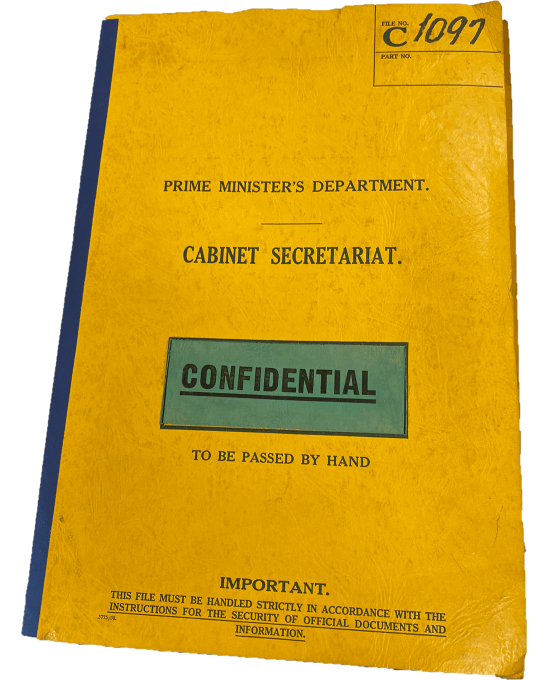
Government decision to change Act takes years
Cabinet discussed changing discriminatory social services law several times during the 1950s. While these conversations eventually led to change, there was opposition at every step.
... some real discretion should be placed in the hands of the Minister and Department of Social Services, rather than to leave entitlement wholly dependent on exemption by the states …
| Attachment | Size |
|---|---|
| cabinet-documents-excerpts.pdf | 2.41 MB |
| Attachment | Size |
|---|---|
| cabinet-documents-excerpts-plaintext.docx | 57.26 KB |
These extracts are from federal Cabinet documents containing discussions and decisions on laws around Aboriginal people's access to government payments.
Early proposal to remove ‘exemption’ rules
In 1954 Paul Hasluck, Minister for Territories, proposed removing ‘exemption’ as a requirement for Aboriginal people to get government payments.
At the time, Aboriginal people had to get exemption from protection laws by state government officials to be eligible for payments. Exemption meant not being under government control. It also meant leaving reserves, missions or settlements, and not having contact with non-exempt Aboriginal people.
Hasluck argued that Aboriginal people should be assessed for eligibility for government payments based on different factors, for example, if they paid taxes.
Opposition to proposed changes
Treasury advised against Minister Hasluck’s proposal. It argued that taxability was hard to work out and could create more discrimination against Aboriginal people with limited incomes.
Minister for Social Services, William McMahon, also had concerns. Because Aboriginal affairs were a state responsibility at the time, he said the federal government couldn’t make special laws. He also said states might try to avoid financial responsibility for Aboriginal affairs if the federal government paid eligible people.
Hasluck’s proposal to change Aboriginal people’s access to social services was not supported by Cabinet.
Later proposal to broaden eligibility and amend the Act
In 1959, new Minister for Social Services, Hugh Roberton, made a similar proposal to Hasluck’s. As well as proposing removing the exemption requirement, he also recommended the government remove other discriminatory parts of the Social Services Act.
Roberton said:
The time seems opportune … for a bold gesture by the Commonwealth that would extend the field of Aboriginal eligibility providing stability in policy and administration and at the same time making a major contribution to Aboriginal welfare …
Roberton proposed that payments could be divided, with a portion paid to authorities of missions or settlements, and the remainder paid directly to the person.
Further opposition
Again, Cabinet members pushed back. They expressed concerns about paying full benefits to older Aboriginal people, saying that for some, a government payment would be much more than what they had earned during their working lives.
Prime Minister Robert Menzies made this argument, saying that ‘... a good number of natives will have more money than they have ever had, which may or may not be a good thing.’
Cabinet members also reiterated earlier worries that states would use the payments to reduce their spending on Aboriginal affairs.
Changes to the Act
This time, the changes were agreed to by Cabinet despite opposition. This decision led to the removal of key restrictions of payments to Aboriginal people from 1959.
This was an important legislative change to social services access for Aboriginal people. However, the Act still excluded those deemed ‘nomadic or tribal’ until 1966, and for years Aboriginal people had to fight to get payments owed to them.
Cabinet is the process through which government makes decisions, with meetings held between senior ministers. Documents produced in the process include submissions, related correspondence, and minutes of decisions.
These documents were maintained by the Secretary to Cabinet. The documents were later transferred to the National Archives of Australia, which holds the files as part of the national archival collection.
You can access these documents through RecordSearch, the online catalogue of the National Archives of Australia. Go to pages 146–150, 110–111, 74–76 and 36-37 for the excerpts included here.
Citation
National Archives of Australia: Secretary to Cabinet; A4940, Menzies and Holt Ministries, 1949–1985; C1097, Social service benefits for Aborigines and financial assistance for states responsible for the advancement of Aboriginals, 1954–1962.
